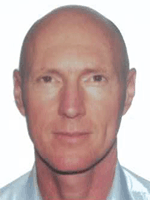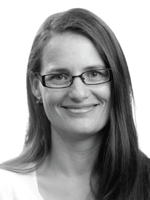Enhancing environmental performance during Wheatstone dredging through science and innovation
Michael Marnane A G , Travis Elsdon B , Tony Rouphael C , Claus Pedersen D , Kiri Peat E and Ceri Morgan FA Chevron Energy Technology Co., 250 St Georges Tce, Perth, WA 6000, Australia.
B Chevron Australia Pty Ltd, 250 St Georges Tce, Perth, WA 6000, Australia.
C Western Marine Science, 5 Birdwood Ave, Como, WA 6152, Australia.
D DHI Water and Environment, Kota Kinabalu, Malaysia.
E Jacobs, ANZ Infrastructure and Environment, 263 Adelaide Tce, Perth, WA 6000, Australia.
F Freelance Environmental Specialist, Perth, WA 6000, Australia.
G Corresponding author. Email: michaelmarnane@chevron.com
The APPEA Journal 57(2) 502-505 https://doi.org/10.1071/AJ16125
Accepted: 3 April 2017 Published: 29 May 2017
Abstract
Dredging for the Chevron-operated Wheatstone LNG Project, near Onslow, Western Australia, involved movement of approximately 30 Mm3 of material over 23 months to provide safe navigation for LNG export as well as trunkline installation and stabilisation. Dredging was carried out in a sub-tropical, inshore environment near to biological benthic communities including corals, seagrasses, macroalgae and filter feeders, deemed sensitive to elevations in turbidity and/or sedimentation associated with dredging. Science and innovative technology was used to proactively and adaptively management dredging in order to afford a high level of environmental protection. Water quality data was transmitted via satellite to Perth where it was compared, daily, against management triggers derived from scientific analysis of an extensive dataset collected during a previous, nearby, dredging program. Accurate hindcast modelling, combined with MODIS satellite imagery, provided oversight of the extent and cause of observed turbid plumes, while forecast modelling provided predictions of the potential impacts of upcoming dredging activities, allowing for proactive changes to dredging activities to minimise potential impacts. Monitoring of benthic communities was undertaken using remotely operated underwater vehicles (ROVs) and water quality monitoring in the latter part of the program was undertaken using remotely operated Wave Gliders (Liquid Robotics), both of which resulted in significant safety improvements and cost savings and over traditional monitoring methods. Post-dredging surveys of benthic communities indicated that, despite their proximity to dredging activities and the enormity of dredged volumes, no detectable impacts had occurred as a result of dredging.
Keywords: Technology, Environmental Protection Outcomes, Pilbara.

Michael Marnane holds a PhD in Marine Ecology from James Cook University and is currently working as Marine Environmental Scientist with Chevron’s Energy Technology Company, based in Perth, Western Australia, where he provides technical advice to projects and leads science and innovation programs to improve operational efficiency and environmental performance. Michael has over 20 years of experience in marine science and environmental management within Australia, Pacific Islands, Southeast Asia and Europe. Michael has led projects on the environmental management of port developments, seismic operations, marine outfalls and remediation programs. He has also developed management and monitoring programs for some of the largest capital dredging campaigns in Australia, including the recently completed Wheatstone campaign. |

Travis Elsdon has a PhD in Marine Ecology from University of Adelaide, and currently works as Marine Scientist at Chevron Australia, Perth, Western Australia. Travis provides technical advice on programs ranging from new developments to ongoing operations, and aims to improve environmental outcomes while maintaining operating efficiency. Travis has over 17 years of experience in research, consulting and commercial aspects of marine science and environmental management within Australia, Pacific, and North and South America, including positions at Woods Hole Oceanographic Institution and University of Adelaide. Travis has led marine scientific projects on discharge monitoring, dredging, port feasibility and development, environmental impact studies and environmental plans. |

Tony Rouphael holds a PhD in Tropical Marine Ecology from James Cook University and is currently working as consultant marine scientist based in Perth, Western Australia. Tony has over 20 years of experience in marine science and conservation management within Australia, North Africa and the Middle East. Tony has assisted with projects relating to port developments, seismic operations, marine parks and marine outfalls. He has also assisted with management and monitoring programs for dredging campaigns in Australia, including the Wheatstone campaign. |

Claus Pedersen holds a M.Sc. and Ph.D. degrees in coastal engineering from the Technical University of Denmark. Since his employment with DHI Water & Environment in 1993, he has worked extensively in Asia in the fields of coastal, marine and environmental engineering and management. Dr. Claus is presently Regional Technical Director for DHI in South-east Asia, and in this role he managed DHI’s input to the Wheatstone Project. Dr. Claus is a registered environmental consultant with the Environment Protection Department of Sabah, the Natural Resources and Environment Board, Sarawak and the Department of Environment, Malaysia. |

Kiri Peat is a Senior Marine Scientist and has been at Jacobs Engineering for the last 9 years. She has a Bachelor of Science (Hons), in Marine Biology, from the Guelph University (2000) and a Masters of Applied Science, in Natural Resource Management, from James Cook University (2005). She has worked in marine science in tropical environments, both internationally and in Australia over a range of projects. She has been a lead author and technical writer for environmental management plans for coastal developments and offshore oil and gas exploration and development. |

Ceri Morgan is an Australian-based environmental specialist with 20 plus years’ international experience in environmental assessments and supporting scientific studies for major infrastructure projects in sensitive marine and terrestrial habitats. This experience encompasses the full life cycle of infrastructure developments from feasibility through to construction and operations, and has been gained through working with some of the largest international resource companies and service providers on major capital projects. |
References
Styan, C. A., Elsdon, T., Marnane, M., Carey, M., Morgan, C., Rouphael, T., and des Lestang, P. (2013). Knowledge gained from marine environmental monitoring during dredging at Barrow Island. APPEA Journal 53, 478.| Knowledge gained from marine environmental monitoring during dredging at Barrow Island.Crossref | GoogleScholarGoogle Scholar |


